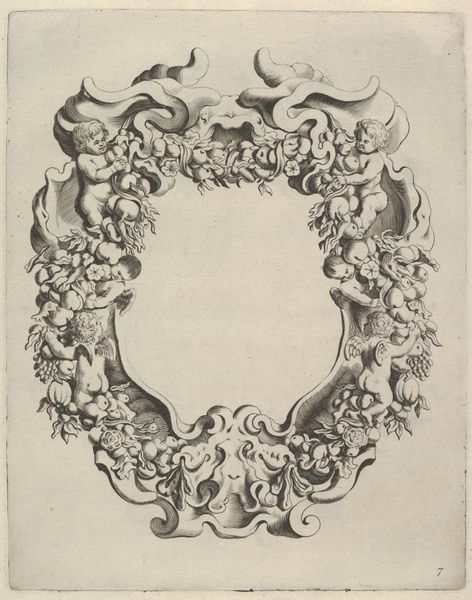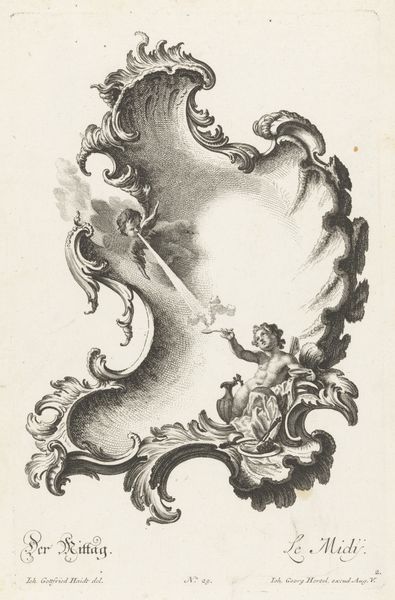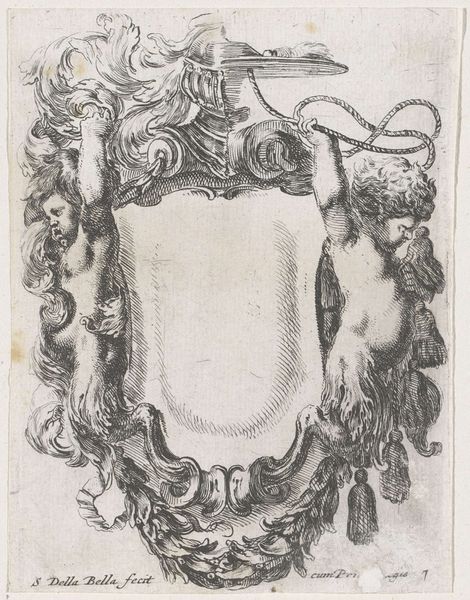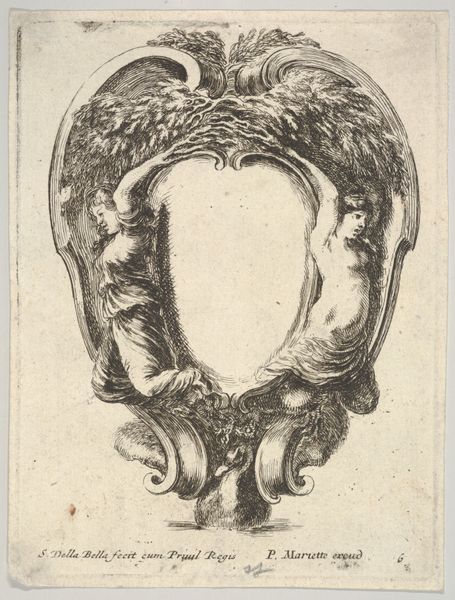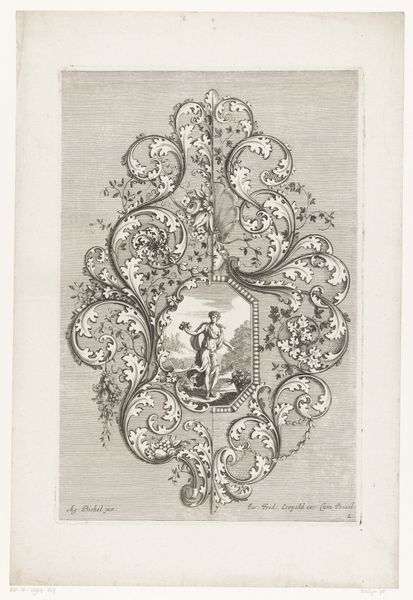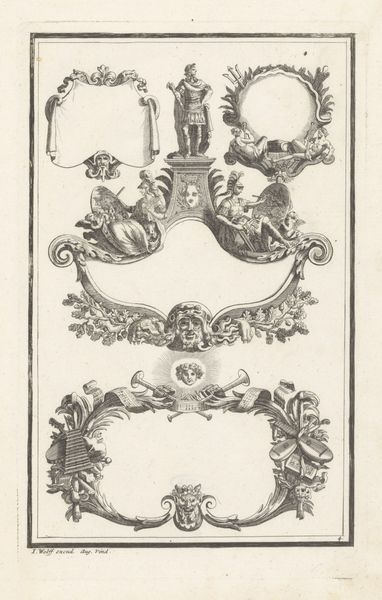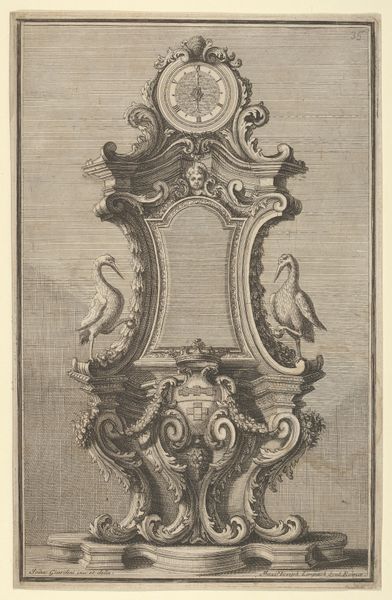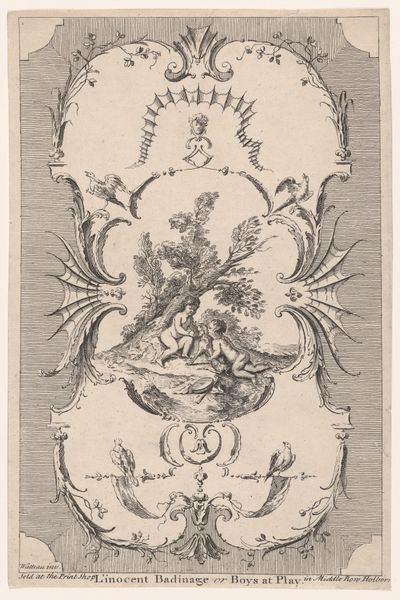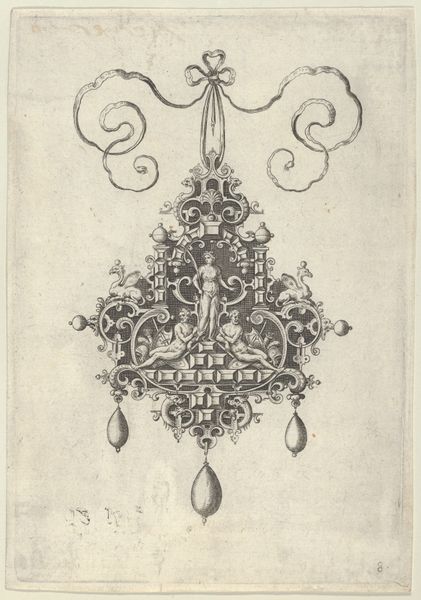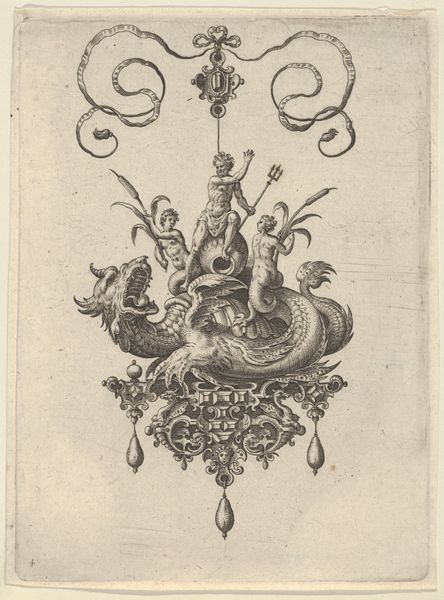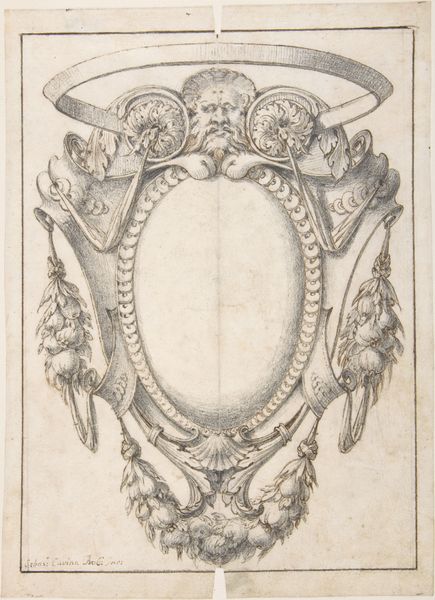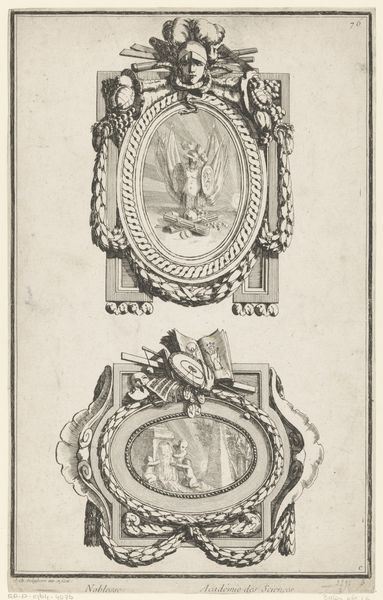
Plate 7: a cartouche flanked by two satyrs, crowned with half a herm and half a cardinal's hat, from 'Nouvelles inventions de Cartouches' 1647
0:00
0:00
drawing, graphic-art, print, engraving
#
drawing
#
graphic-art
#
baroque
#
pen drawing
# print
#
engraving
Dimensions: sheet: 6 15/16 x 4 15/16 in. (17.7 x 12.6 cm)
Copyright: Public Domain
Curator: Stefano della Bella's "Plate 7: a cartouche flanked by two satyrs, crowned with half a herm and half a cardinal's hat, from 'Nouvelles inventions de Cartouches'," created around 1647, is what we're examining today at The Met. Editor: Immediately, I’m struck by the intricate, almost overwhelming detail. It feels like peering into a secret, slightly mischievous world—a stage set for a dark fairy tale. Curator: Indeed. This engraving demonstrates della Bella’s mastery of line. Look at the clear delineation of the forms. We can see how printmaking during this time allowed for the proliferation of ornamental designs, shaping both aesthetic and material culture. Editor: And that bizarre combination on top! Half-herm, half-cardinal—it's absurd and brilliant. Almost Dada before Dada was a thing! It speaks to me of satire, of poking fun at the established order. It gives the piece this wonderfully irreverent feel. Curator: Possibly. These cartouches served a practical purpose, used by artisans as models. The inclusion of satyrs signals a link to classical antiquity. The print operates both within the framework of aristocratic culture while alluding to other cultural forces. Editor: The satyrs feel quite burdened. Like they’re almost crushed under the weight of ornamentation. Their faces, caught in shadow, project a quiet intensity. Is that rope around one satyr’s shoulder? I see a metaphor for constraints and artistic freedom... Curator: Yes, they are tethered. But, practically, notice the density of the lines creates different values. Consider the impact these designs might have had on luxury goods at the time. Or even tapestries! Della Bella shaped trends of taste. Editor: So it’s about consumption, then. That blank cartouche in the center makes you wonder, what are we supposed to desire here? A coat of arms? A brand? Even today, we’re bombarded with similar semiotic tricks! It does give me pause. Curator: Absolutely. By examining the networks through which art moved—the studios, workshops, and international markets—we begin to grasp its function beyond mere aesthetic appreciation. Editor: Makes you question how something so meticulous and, let's face it, strange, could become so influential. It almost suggests a delightful madness at the heart of creativity. I like that tension between control and chaos. Curator: Understanding the labor involved offers a different perspective on creative legacy. Editor: Thanks for the labor breakdown—a needed reminder! It's given me some pause for thought on image production, then and now.
Comments
No comments
Be the first to comment and join the conversation on the ultimate creative platform.
